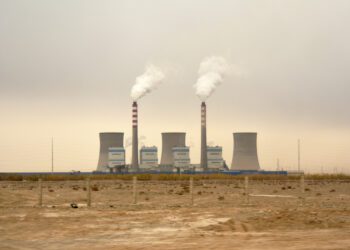CIBC hosts, James Wright and Ines Serrao, sit down with Michael Rucker, CEO of Scout Clean Energy, to discuss the evolving renewable energy landscape, focusing on the wind, solar, and storage sectors. The conversation explores challenges such as tariff uncertainties, repowering projects, and the potential impacts of changes to clean energy tax credits, while emphasizing the importance of accelerating renewable energy deployment to meet growing electricity demand.
On today’s episode, we’re discussing the wind and energy industry. To help us navigate all that is Michael Rucker. Michael’s the CEO of Scout Clean Energy. Welcome, Michael.
James Wright: All right, let’s get right into it. So Michael, what we love to do just to kick off is just hear a bit about you quickly, the background. So to help set the stage, could you share a bit about your personal background, how you found your way into the wind sector and your path to scout?
Michael Rucker: Yeah, I’m the founder and CEO of Scout Clean Energy, but that culminated a very long career really in our industry. entered renewables in the early 1990s, but I’ve done a diverse number of things in the industry, which set me up well effectively to become an entrepreneur ultimately. So I actually started out in policy.
I worked for the Edison Electric Institute and then for the International Energy Agency in Europe, and I worked on the climate change negotiations in the energy technology office. So I worked on earlier renewable energy technologies and technology transfers to developing countries. But I like to build things. And I really wanted to exchange that long process around negotiating a climate agreement to actually getting iron in the ground effectively. So I got into power marketing and trading. ran the largest renewable energy certificate market in the world for a while, but that got me a launch into actually manufacturing at that point.
So I worked for General Electric right after the acquisition of Enron Wind. So in the earliest days of really the large scale commercialization of wind in the US. Went back, joined some old colleagues, became a developer for Clipper Wind Power. So then I really shifted entirely into a development focus, which suited me very well. From Clipper, I ended up running a German company’s North American wind and services business. That was purely wind at that time. They withdrew from the market in 2013. So I started a company. What else would you do if you lose your job and have a good team behind you? So started out in operations, maintenance and construction management with a company called Harvest Energy Services, which grew very quickly, but you know, once you have development in your blood, if you’re like me, it’s kind of like an addiction. It’s like a chronic illness. So I couldn’t stay out of it. So I ended up raising private equity money, sponsored some projects in the earliest days of Scout as a concept, but was able after a success to spin Scout out of the services company right when the first long-term credit extension of the credits took place in 2016, which was with a phase out.
Feeling more and more like the big beautiful bill you were talking about at this time. And from there, of hit good timing in terms of the opportunities in front of us with the first long-term extension, we needed a development pipeline. So I was able to build out a development pipeline, had General Electric Energy Financial Services actually invested in that pipeline and we targeted GE turbines and financings for it. Became a portfolio company of Quinnbrook Infrastructure Partners, which is a London-based fund manager. They were in their first fund. The time came for exit from that fund and in December of 22, sold Scout to Brookfield in their Brookfield Global Transition Fund 1 for $1.1 billion, and we’ve since been building out our pipelines, our operational assets and also adding some employees. We’re about 200 people based in Boulder, Colorado these days.
Ines Serrao: As you know, in my current role at CIBC, my main focus is wind, solar, and battery storage. And based on the description you just made and what we know, because we’re very happy to support you in a lot of your deals, Scouts roots are in the wind business. But you have also diversified across solar. How are you thinking about these strategic decisions? Are they based on pure economics and demand for off-takers? Or how do you make those plans?
Michael Rucker: Well, progressing from a wind-only company to a diversified solar and storage company as well was just a natural progression for it. And ultimately, it’s really driven by our customers’ needs for 24-7 clean, renewable energy, and not one of those technologies is going to achieve that on its own.
We really need diversity in our clean energy mix, and the grid needs general diversity as well. So following that demand from our customers, we really couldn’t hit all those hours of the day just serving them with wind energy. So we added solar to hit the peak hours, the traditional peak hours, and storage is the natural addition to kind of work on the ramp periods in particular. So with all three, we provide a better product ultimately for our customers and for the grid generally. You just can’t ignore solar too. Solar’s Eclipse Wind is the most popular and widely installed renewable technology worldwide and that’s it.
Solar is not going to be dethroned from its renewable energy king. It’s going to be the highest growth just simply given the ease of siding and the efficiency of mass producing panels. So we had to do solar in that respect too just to be able to reach the capacity addition targets that the markets are really requiring right now. In storage, it has a ways to go in terms of the commercialization of the product, really, the revenue models, in particular, in the US. But its costs have been coming down as of late, a little challenged by the tariffs, like most things in the economy. storage is just going to have an increasingly important role for it as well and hopefully down the road we can see longer-term duration storage technologies.












